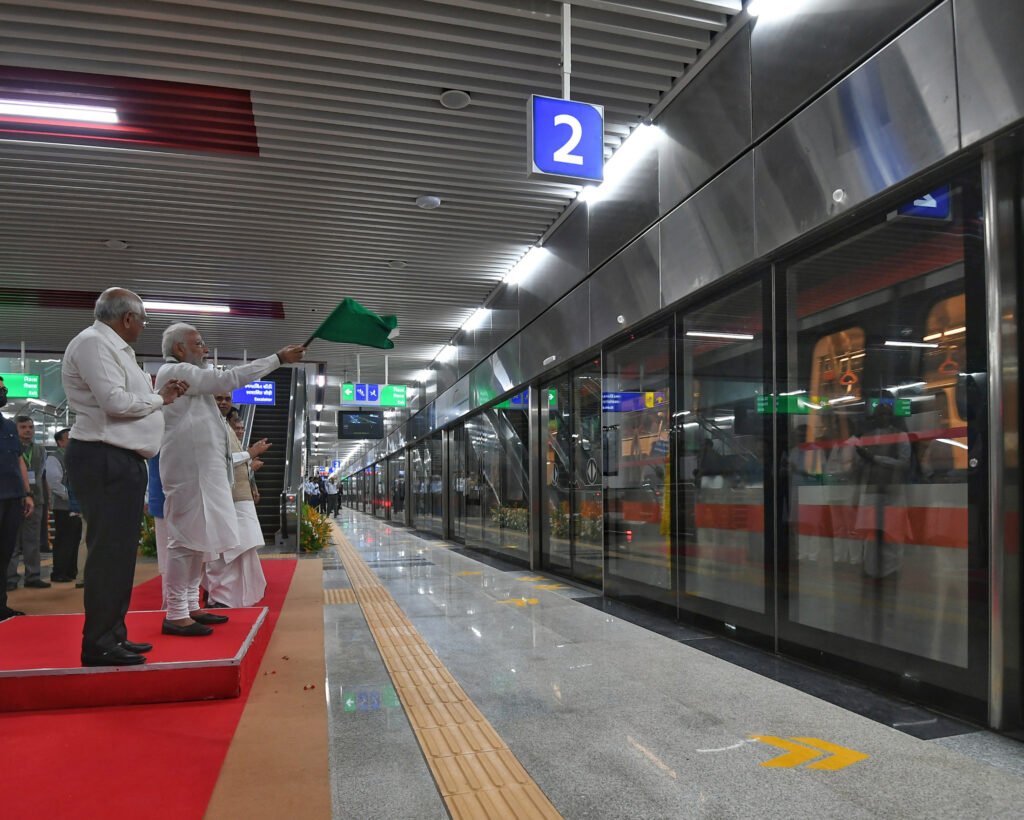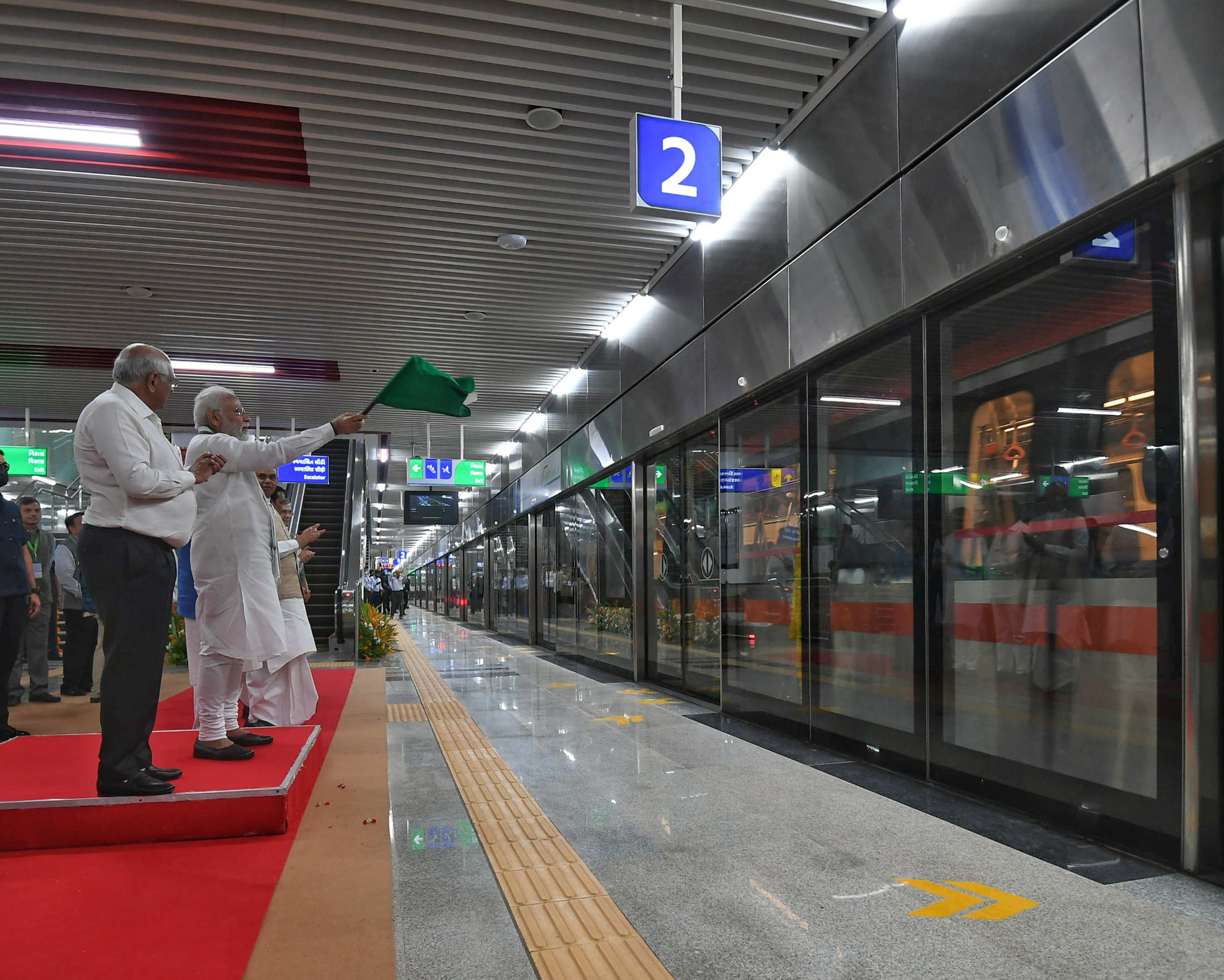Jaipur Metro is considered to be India’s biggest field metro project. Is India’s investment in metro projects in smaller cities a wise decision, or are there prospective places that deserve more attention? Is India WASTING Money on small Cities for METRO in 2024…

Introduction – Is India WASTING Money on small Cities for METRO in 2024
From economic considerations to regional development goals, we analyze the complexities of infrastructure investment in smaller metros and question whether it’s a strategic move or a potential misallocation of resources.
The significance of improved transportation and connectivity in smaller cities, potentially alleviating issues such as overcrowding, traffic congestion, and housing shortages.
Delve into the importance of rigorous cost-benefit analysis to ensure that these projects generate sufficient returns and positively impact the quality of life for residents. We discuss the need for assessments that prioritize long-term sustainability, including environmental impact, to ensure that development aligns with ecological concerns.
Is India WASTING Money on small Cities for METRO in 2024
Metro should be built in my city Bhubaneswar, otherwise first it should be built in Guwahati because it is bigger. Otherwise, first, it should be built in Ranchi or first, it should be built in Coimbatore, which is in great need of a metro. Today we all are in our respective cities. Many people give such arguments for building a metro that even if the population requirements for building a metro in your city do not beat the basic international standard, Still, we see people and many political parties making a place for the metro in their agenda.
But in any city of the world, Despite not meeting the requirement of population per square kilometer of 10 lakh people, which is a requirement, there are many tier two cities in which the metro is not only built but is also being built and will probably continue to be built in the future too today we are talking about this topic. But we will talk about whether Metros India should really build this or not because Multiple Times Sustainable crowd is not seen inside these metro systems, so let’s start [music] Kanpur Metro, Jaipur Metro, Indore Metro, Bhopal Metro, some parts of all these metro lances are open, some are under construction.
One thing common in all these lances is that in the areas where it is being made, the requirement is that it does not meet the requirement of a square kilometer per 10 lakh population and such a low population density. Besides, it is difficult for a metro network to be successful. Its prime example is Jaipur and Kanpur Metro, which are unable to attract enough crowd to run themselves sustainably. In fact, Jaipur Metro is considered to be India’s biggest field metro project.
In this condition, it is going on but despite this, not only Jaipur and Kanpur metro are being expanded but Agra Lucknow metro lenses are being constructed in record times inside these cities, so is it right to build metro lenses inside small cities? To understand whether the money is invested in the right place or not, we will have to understand a little history from around the world. It is not that there is no metro inside small cities or in untouched places. Metro lines were not built earlier. It is not necessary to fulfill today’s requirements but in the future, there will be a need for force majeure.
Metro can also be built to bring growth or to fulfill the anticipated growth. In many big cities of the country, metros are being built late which should have been built decades ago, but many metros are being built today which are not suitable for the future. Or will the cutter do it in 25 years? This is not a new story only for India in 18638 time It was opened when London was not such a big city. With the introduction of the metro, the city itself expanded. The area was extended from Bakim Sher to Vani Junction. At that time, the London ground was very dense. These areas were very dense.
There were no populated areas, but with the opening of the lines and the expansion of the city, these routes became busier and the London Underground is today considered to be the busiest transit system in the world. Obviously, it is also historical, even if we do not go to the past, we can see China. We also look at China’s recent metro route as an example because China is famous for its many dense cities. Today, metro rail systems are being developed there. More than 150 cities are being built which have a population of more than 1 million or 10 lakh, just Shanghai and Beijing.
Mila alone maintains more grade lines for the metro than the total metro rail networks within all the cities of America combined, but this was not the case earlier because, till 1995, metro lanes existed only within Beijing city in China. Metro had come first. If India’s first modern metro was built after Kolkata, then it was opened in Delhi in 2002, that is, the metro rail of China and India. There is not much gap between the beginning of the modernization of networks but the difference came when in the year 2008 China and Dhund
Metro lines were being constructed in India. Work was being done on them very rarely. The thing to note is that at that time the world was making fun of China because China was also constructing metro lines in some small cities which were literally villages. You can see many such videos on the internet where such metro The form of stations have been shown which were opened in such places where there was literal forest, empty land, no one around, and the whole world considered China stupid for building these metros but gradually as in metro
As the connectivity of the lines increased, gradually large urban human settlements started coming up there, due to which the metro stations that were built like ghost stations gradually became important. In just eight to 10 years, the Metro So much infra has been developed around the stations that along with the stations, there is also a thriving economic hub where people consider it a metro station. Today, China has built urban rail systems in 47 big and small cities, and along with this- The work that is going on is not stopping, it is being done continuously, and if we join hands with many such people in the world.
If you look at the examples, you will come to know that metro stations should not be located inside small cities and there is no benefit from it, it is not so but we get more regions to build metro lances and they understand the traffic one by one. Congestion: Today, be it Mumbai or Indore, traffic problem exists in almost all small and big cities of India, but there are many big cities in which this problem is solved or rather So it would have been under control if Metro or any other mass rapid transit system had already existed. Things are happening very late in Mumbai.
Kind of late in Delhi too, Calcutta’s expansion did not happen much. The same goes for Bengaluru, these things would not have happened if a good transit medium had already existed. We see it happening through clear metros and these are the things that we will see in the future. Hope will be seen working fully for the small towns now. Next is urban planning. Today in the country, there is a need for not just four but 40 to 50 metropolitan cities which will help in building the urban population of the country and develop urban centers of growth. When a metro lane is built somewhere, then it becomes an opportunity for the city.
Plan layout is promoted because it does not happen that first small village houses are built, then small buildings are built, then small commercial ones are built and gradually expansion happens as people come here. What happens is that Delhi NCR has seen that when a metro line comes, then real estate developers, government, many education institutes, hospitals, everything, looking at the connectivity, they immediately start creating the proper modern state-of-the-art infra and that is the first thing. A building is built on an empty land, it does not become a hut.
Rather, a properly developed building is built, and metro lines also get this thing done by integration with other transport modes. In India, sometimes just one transportation mode cannot fulfill the needs of any city, hence, multimodal transportation hubs are being created even under the Smart City Missions of the country and the metro system which becomes their main artery. Fourth is modernization. The condition of transportation of the country also tells its future but unfortunately today the biggest transit mode in the entire country is Indian Railways which is substandard and
Today, it is necessary to build such bulletin networks, RRTS, or metro lanes in Indian cities, which are far behind the international standards, because in the coming time, the essential facilities that people should get, can be provided and the tier two cities can become better. In today’s tier one cities, this will be possible only through these metro lines, and hence even if these lines are running in loss today. With the growth of India in the coming future, it will definitely fulfill its actual work. There is a proverb in English which clearly states that if
You build it then they will come, that is, if you give a facility to people, then automatically people start using it. This is not limited to the metro if we talk about digital payments today. Let us talk about online shopping at our place. Let us see the usage of smartphones at our place. Let us see the highways which are tolled or before any other alternative route is made. You will hear a lot of criticism as to who is using it. Why would it be used, and what would be the benefit, but gradually people get options that make them look better.
It seems that the adoption of automatic things is happening and it is necessary for the future growth of tea-to-cities of the country.

